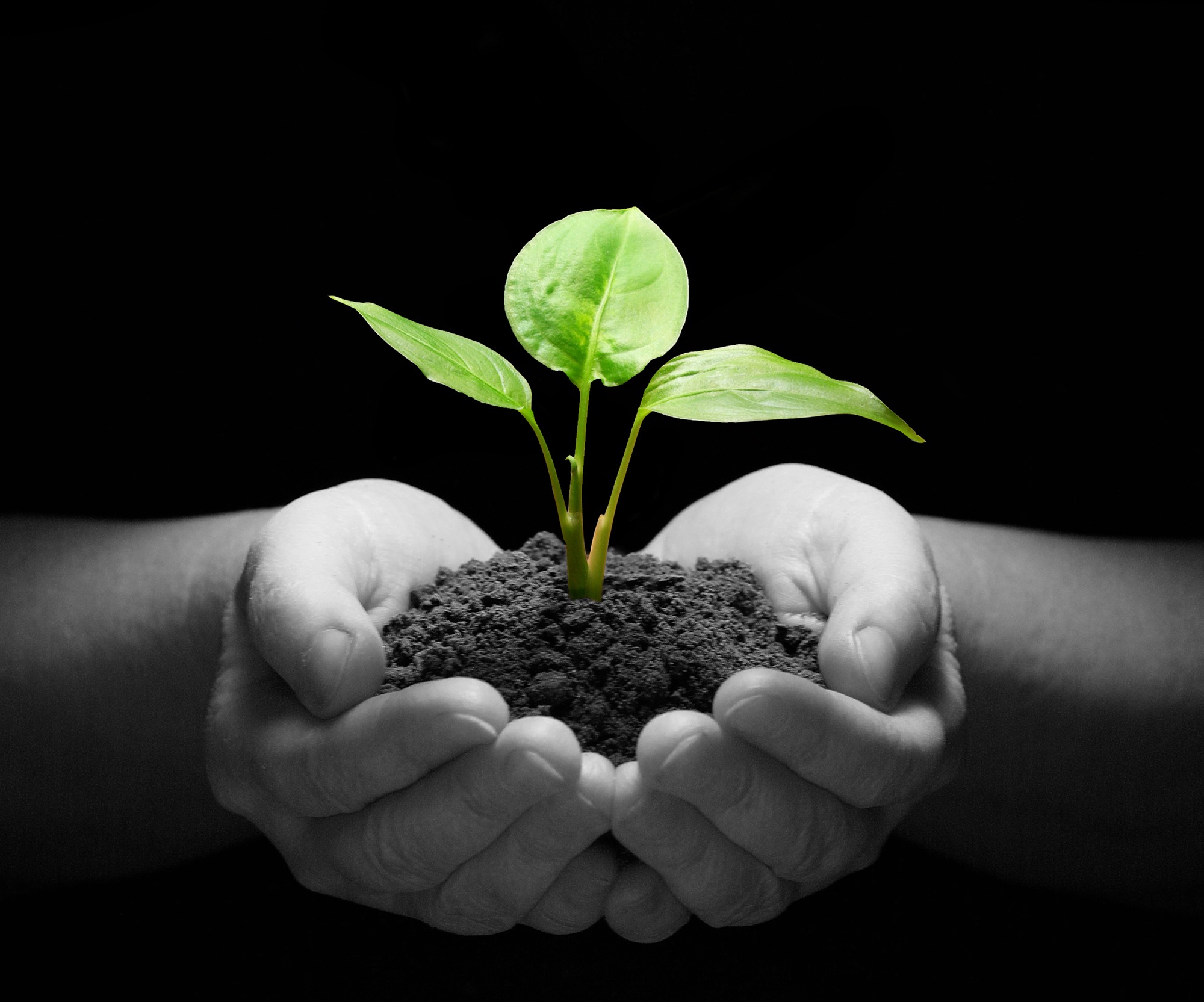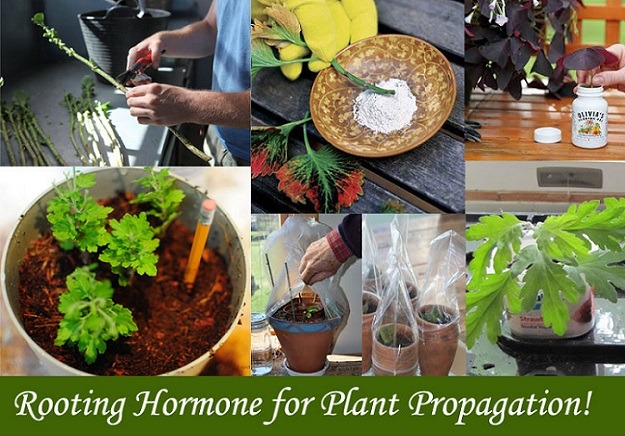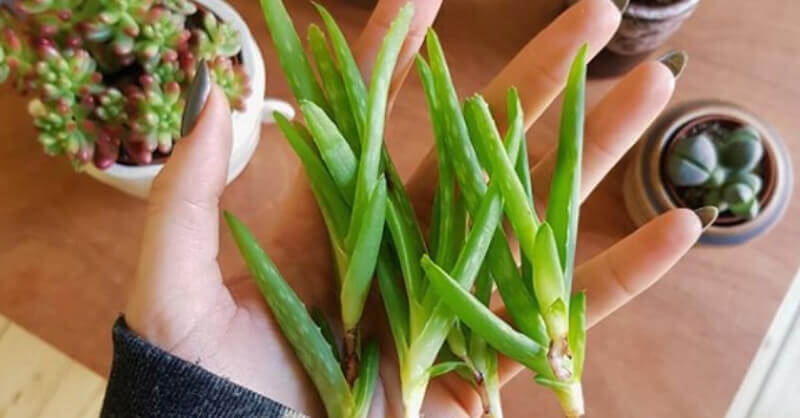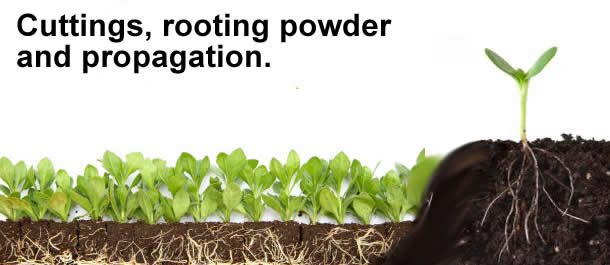
Cloning may sound like the plot of a scary science fiction movie, but in the world of gardening, cloning means taking cuttings from strong, healthy plants and cultivating them to create more. How do you get those cuttings to transform themselves into brand new plants? Often, a rooting hormone is a key ingredient to plant propagation success. Root hormones are available in several different forms, synthetic as well as organic, and their purpose is to give plant cuttings a chance at a new life.
The Science of Plant Hormones
Like animals (including humans), plants produce hormones. Plant hormones are different from animal hormones, but just as animals’ bodies produce hormones that stimulate and regulate growth, plants produce hormones that serve similar purposes. In plants, these hormones are called auxins.
Among other functions, auxins stimulate root growth. Plants naturally produce two auxins: indole-3-acetic acid (IAA) and indole-3-butyric acid (IBA). Naturally occurring auxins are rarely used in plant cloning because they are difficult for a gardener to utilize. IBA is only found in trace amounts because plants convert it into IAA, while IAA is photosensitive and breaks down upon light exposure. Therefore, most gardeners use synthesized rooting hormones, such as alpha-naphthalene acetic acid (NAA) or synthetic IBA, which produce similar effects on plants but are easier for people to work with.
Oftentimes, under the right circumstances, plant cuttings will start producing their own root hormones and begin developing roots with little or no intervention from the gardener. However, depending on the plant species, some cuttings need a little more help. Some plant cuttings may take a long time to produce new roots on their own, but using a rooting hormone can help to expedite the process. In most cases, the use of a rooting hormone will increase the cuttings’ chances of survival and result in healthier and more viable plants with stronger roots, although there are some plants (such as petunias) on which root hormone may actually have a negative effect. When in doubt, consult an expert on the particular plant you want to cultivate.

Varieties of Rooting Hormone
Rooting hormones come in several different forms, and each has its own strengths and weakness. Choose the variety that will work best for you and your plants.
-
Gel
The gel form of root hormone is easy for the gardener to use and beneficial for the plants. It’s easy because there’s no preparation needed; you can apply it right to the plants, with no extra steps involved. It’s beneficial for the plants because it is more adhesive and covers the cut section completely. It’s the least likely of the three varieties to get rubbed off or washed away when the plants are watered.
-
Powder
The biggest advantage of powdered rooting hormone is that it will keep for years on a shelf as long as it is stored in a dry place. Like gel, the powdered variety is also easy to work with. The downside to the powdered form is that it can be more difficult to get it to stick to the plants, but dampening the plant cuttings with a little water before applying the powdered hormone can mitigate this.
-
Liquid
There are two different kinds of liquid root hormone: concentrated and ready-to-use. Either can be useful and effective, but it is important to know which kind you have before you apply it to your plants. Concentrated liquid hormone is an extremely potent chemical and must be diluted before use or it will harm your cuttings. Ready-to-use liquid hormone has already been properly formulated, and diluting it further will render it ineffective.
As with the gel variety, the advantage of ready-to-use liquid hormone is that it can be applied to cuttings directly out of the container, with no extra preparation. However, the good thing about a concentrate is that you can customize the resultant rooting solution to have the ideal concentration for the variety of plant that you wish to propagate. Concentrated rooting hormone is also less expensive than ready-to-use.
One downside to both kinds of liquid is that they don’t have the shelf life of the powdered variety, and refrigeration may be necessary for storage. On the upside, however, they offer the gardener the most versatility of all synthetic varieties of root hormone.

Organic Options
Of course, there is one potential issue with all synthetic varieties of rooting hormone: they all contain artificial chemicals. What is the organic gardener to do? Fortunately for those who don’t want to use synthetic materials in the garden, there are some natural root hormone options, some of which you may already have in your home.
- Aspirin: Perhaps not a good option for the purist, but this common household pharmaceutical contains salicylic acid (SA), which increases the bioproductivity of a plant and regulates its growth. To use aspirin as a rooting hormone, grind the pills into powder, dissolve the powder in water, and apply to your cuttings.
- Honey: Not a hormone per se, but honey has antimicrobial properties that protect young plants from infection, giving them time for their naturally occurring hormones to kick in. Honey can be applied directly to the cuttings, or you can prepare a solution by diluting 1 tablespoon of honey in 2 cups of boiled water. This solution will last for two weeks if it is stored covered in a dark place.
- Cinnamon: Known for centuries as a folk remedy, cinnamon serves a similar function to honey in guarding plant cuttings from infection with its antibacterial and antifungal properties. Cinnamon powder can be applied to damp cuttings, and it can also be used in concert with some of the other organic options on this list, such as willow extract.
- Apple Cider Vinegar: Using apple cider vinegar as a rooting compound should be attempted with caution, as undiluted vinegar has herbicidal properties. The right solution of apple cider vinegar, however, has beneficial elements that can promote plant growth. Three teaspoons mixed into a gallon of water is all you need.
- Willow Extract: It may not be the most readily available material on this list, but willow extract may be the most effective of the organic root hormones, containing not one but two auxins: SA and naturally occurring IBA. Willow extract is available for purchase commercially, although it may take some hunting on the Internet in order to find it. You can also make your own willow extract from green willow twigs by boiling water and soaking the twigs for at least 24 hours. You can do this any time of year, but taking fresh twigs in the springtime will result in a more potent solution. Be sure you’re only using new growth.

DO’s and DON’Ts
Whether you use choose an organic or synthetic rooting hormone, in order to get the most out of it, there are some important guidelines you’ll need to follow, as well as some harmful mistakes you’ll want to avoid.
- DO take cuttings only from the healthiest and strongest plants. The new plants will be clones of the parent plant, so pick a parent plant with genetic vigor.
- DO remove the leaves from the cuttings before applying the root hormone. The hormone can damage the leaves; also, new leaf growth is an indication that new roots are growing well.
- DO place the rooting hormone to be used in a separate receptacle from the container that it came in. This prevents contamination and waste.
- DO follow the directions for use, especially as it relates to dilution of a concentrate.
- DO research the plants you want to propagate and choose the proper formulation of root hormone for that plant. Plants with a woody stem, for example, will need a higher concentration.
- DO keep plants moist, but not overwatered, while the cuttings are taking root.
- DON’T apply undiluted concentrate to your cuttings. This is analogous to a drug overdose for your plants.
- DON’T dip your plant cuttings directly in the container that the root hormone comes in. This will contaminate the unused portion. Instead, place a small portion in a separate container and dip your cuttings into that.
- DON’T plant your new cuttings in garden soil. Instead, use rooting medium. You can buy rooting medium (also known as seed-starting mix) at your favorite garden center, or you can make your own.
- DON’T use unsterilized equipment when propagating new plant cuttings. Keep your equipment sterile and sanitized to protect your plants from disease.
- DON’T use rooting hormone without first researching and understanding its effect on your specific type of plant. Just as a helpful medication can be harmful to a person if administered incorrectly, so can root hormone potentially harm plants, if used improperly.
Conclusion
If you have a plant that’s already productive, you want to keep a good thing going, and one way to do that is by propagating, or cloning, the successful plant. Rooting hormone can help give your new cuttings, or clones, their best chance at survival, potentially increasing their success rate up to 75%. Root hormone can help the new plants thrive instead of struggle to survive, or encourage reluctant cuttings to produce roots more quickly. However, not all plants will react to all rooting hormones the same way, and some plants may be harmed by them, so be sure you do your homework first.
Becky is a wildlife enthusiast and pet and livestock care expert with a diploma in canine nutrition. With over a decade of experience in animal welfare, Becky lends her expertise to Simple Family Preparedness through insightful info about pets, livestock, bee keeping, and the practicalities of homesteading.
Last update on 2024-07-27 at 03:37 / Affiliate links / Images from Amazon Product Advertising API




